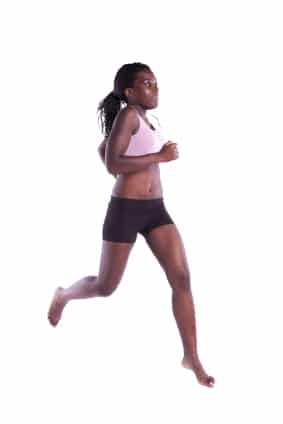 With the popularity of athletic and running shoes, it’s hard to imagine runners kicking them to run their course in bare feet. Barefoot running is a growing trend, and some runners are convinced that running without shoes is healthier for their feet. Tell that to the runner who slaps his foot down on a sharp stick as he or she navigates the last quarter-mile of his morning run. Barefoot running isn’t for everyone, but should anyone be doing it?
With the popularity of athletic and running shoes, it’s hard to imagine runners kicking them to run their course in bare feet. Barefoot running is a growing trend, and some runners are convinced that running without shoes is healthier for their feet. Tell that to the runner who slaps his foot down on a sharp stick as he or she navigates the last quarter-mile of his morning run. Barefoot running isn’t for everyone, but should anyone be doing it?
Dr. Daniel E. Lieberman, a Harvard professor of evolutionary biology, thinks so. He points out that barefoot runners point their toes more and land on the ball and middle of their feet instead of on their heels. Landing on the forefoot and middle of the feet increases the spring in their step and reduces the force of impact on the heels.
He makes another valid point. Early man didn’t have access to an athletic shoe store like modern-day runners, and our primitive ancestors were able to run at impressive speeds in their bare feet. Are the runners of today too far removed from their ancient roots? Have we sacrificed stylish feet for foot health?
Who hasn’t had a blister after wearing new running shoes or had to deal with an ugly, black toenail from bleeding or a loose toenail from running in shoes that are too tight? On the other hand, you could be trading blisters and black toenails for cuts and puncture wounds if you run barefoot down the wrong trail. The idea of running on a hard surface with bare tootsies is enough to send some runners sprinting to the closet for their running shoes.
Supporters of barefoot running point out that when you run without shoes, you build up calluses that make you less vulnerable to superficial scrapes and skin irritation. On the other hand, it takes time to build up those calluses, so if you subscribe to the benefits of barefoot running, start on a smooth surface such a track or tennis court first. Don’t try to run your usual distance when you first start out. Your joints and feet need to adapt to the experience of running without shoes.
Most importantly, keep your eyes on the path ahead. You never know when a sharp object in the road will collide with a bare foot. Ouch!
If you have a history of joint or foot problems, running without shoes may not be for you. Some proponents of barefoot running point out that barefoot running strengthens the arches in the feet, thereby reducing the risk of injury. They claim it can even help heel pain due to plantar fasciitis, but there’s no real research to support this. Don’t do it if you have orthopedic issues unless you consult your doctor first.
Despite its possible benefits, barefoot running isn’t for everyone. Some runners feel more comfortable with their feet firmly ensconced in shoes. They want to focus on running, not worry about the next sharp piece of glass that might bump into their foot and leave a memorable impression. For those folks, Nike makes a shoe called Nike Free that gives the sensation of barefoot running without the risk of stepping on sharp objects in the road. Barefoot or not? You decide.
References:
On Fitness. March/April 2011. Page 12.
Related Articles By Cathe:
Exercising with Plantar Fasciitis
Ankle Swelling: What’s Causing My Ankles and Feet to Swell?
3 Ways Your Feet Change with Age and How It Can Impact Your Fitness Training

